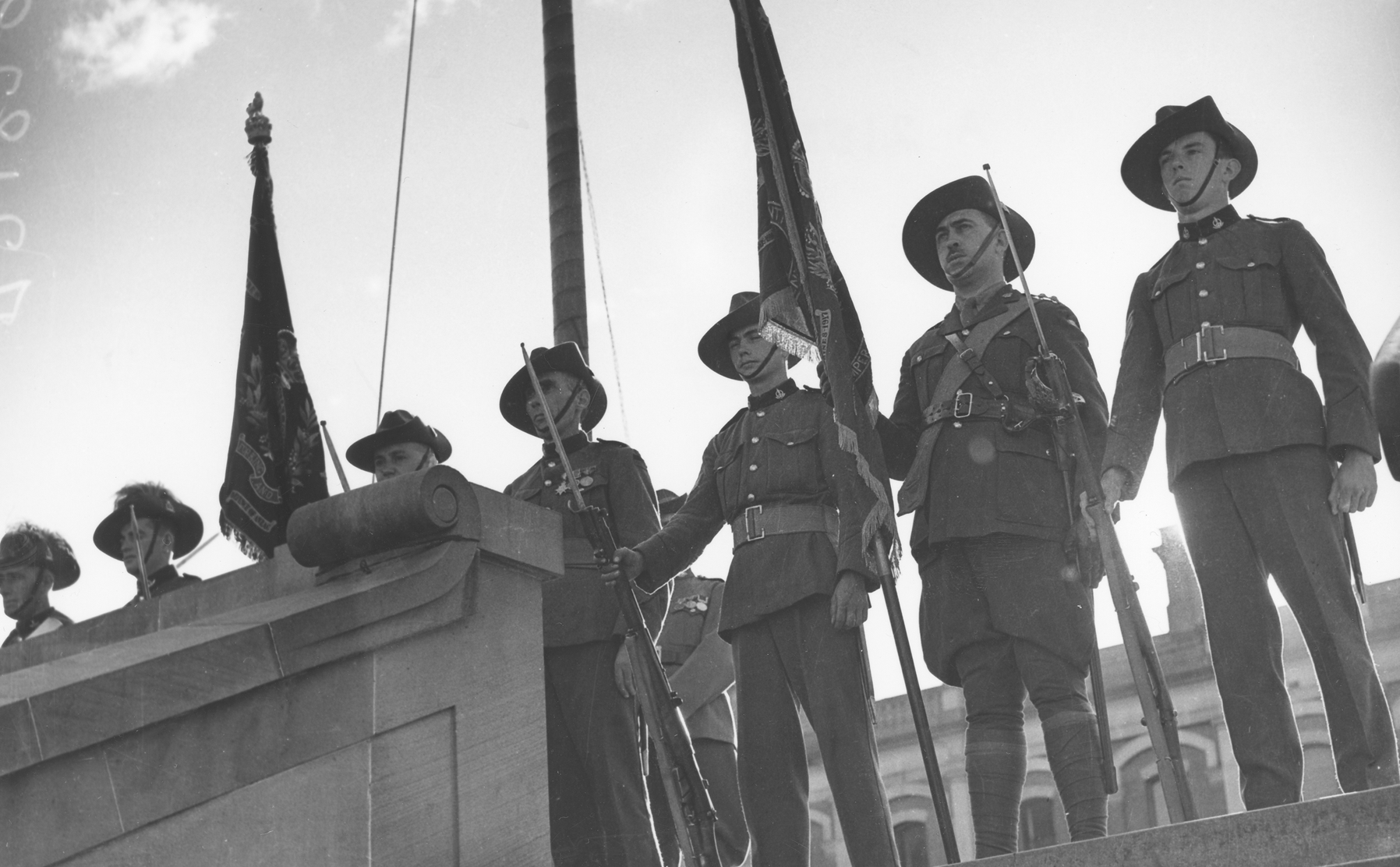MoB Sunday Stories: Anzac Square
For just over ninety years, the people of Brisbane have risen well before sunrise and gathered around the Shrine of Remembrance for the Anzac Day dawn service.

The Shrine of Remembrance – a large cenotaph built of Helidon sandstone – is probably the most well-known feature of Anzac Square, a green-grassed sanctuary in Brisbane’s inner-city and the State War Memorial of Queensland. It was built following Australia’s devastating loss of life in the Great War (WWI), during which approximately 60,000 troops were killed and 152,000 injured.
1931 marks the first dawn service held at Anzac Square. The Queensland Times reports that the parade and ensuing service were the finest the city had seen.
“Falling in at the School of Arts on, Ann Street, at 4:15am, about 250 returned men, headed by Lieutenant H.E. Polley, one of the original 9th Battalion… followed by members of the public, marched to Anzac Square. At 4:28am, he actual time of the landing at Gallipoli, the uniformed men led a slow march up the steps, and on to the Shrine of Remembrance… By this time there were more than 1000 people gathered in silence around the flickering light of the eternal flame.”
The Queensland Times, 27 April 1931

Though the idea for a memorial first came about in 1916, it would be many years before construction began. Originally, the square was envisaged as taking up the whole city block bounded by Ann, Edward, Adelaide and Creek Street but government negotiations throughout the early 1920s eventuated in a smaller site being chosen. In 1928 a competition was held for the design of the Shrine of Remembrance, which was won by Sydney architects Buchanan and Cowper and construction on the square finally commenced.


Standing at approximately seven meters tall, the shrine is an adaption of Greek Classical Revival style and sits on a three-tiered base of Queensland granite. The eighteen columns of the shrine represent the year WWI ended – 1918 – and are inscribed with the names of battlefields where Australian soldiers fought. The staircase that leads up to the shrine also symbolises this year, with 19 stairs in the first set and 18 in the second. In the centre of the impressive colonnade sits a bronze urn forever lit with the Eternal Flame – a symbol of faith and remembrance. Below the shrine lies a crypt, with an Honour Role that commemorates the 470 men of the 41st Battalion who lost their lives in WWI.
On Armistice Day 11 November 1930 – now Remembrance Day – Governor Sir John Goodwin officially dedicated the shrine and square to the men and women who had served Australia in the Great War. That same year, a large group of women gathered in the Lady Mayoress’s rooms at City Hall for a meeting about the installation of a Queensland Women’s War Memorial in the square. It was decided that the memorial would also serve a practical purpose with the addition of drinking fountains.
“Donations of 1 shilling from as many women as possible throughout Queensland were required to make it possible to carry out the scheme… The objective was 10,000 shillings, and it was considered that the fountains not only would be a worthy memorial but would add beauty to the city, and would be a lasting value to the coming generations… A debt of gratitude was owed to the women for the motive which prompted them to carry out such a suggestion.”
The Brisbane Courier, 10 May 1930
Designed and carved in-situ by one of Queensland’s most lauded sculptors, Daphne Mayo, the memorial was unveiled in 1932. Also built of Helidon sandstone, the memorial is located on the western wall of Anzac Square below the Shrine of Remembrance and depicts a military procession.



The Boer War memorial sits on the middle of three paths leading from Adelaide Street, through the square to the shrine. These paths represent the three branches of the armed forces, Army, Navy and Air Force and are lined with trees including Palms, Bribie Island Pines and Bottle Trees. The Bottle Trees were donated by Colonel Cameron, a former Light Horseman and an active lobbyist for the square.
Much to the public’s dismay, the 1960s and 1970s saw various proposals made to alter Anzac Square as part of the redevelopment of property on Adelaide Street. After a drawn-out public debate, a plan was settled on that would involve limited alterations and the works were completed by 1984, including the enlargement of the Crypt to house the Second World War Shrine of Memories. 1988 saw the addition of memorials to those who served in the Korean and Vietnam wars.

Though originally built as a memorial for the soldiers who fought in WWI, Anzac Square now acts as a memorial for all Australian conflicts and service. On a sunny day in Brisbane, it serves as a green respite from surrounding city pavements and high rises and on 25 April, it continues to draw thousands of Brisbane residents out of their beds and into the cooling April air to remember those that we’ve lost to war.








